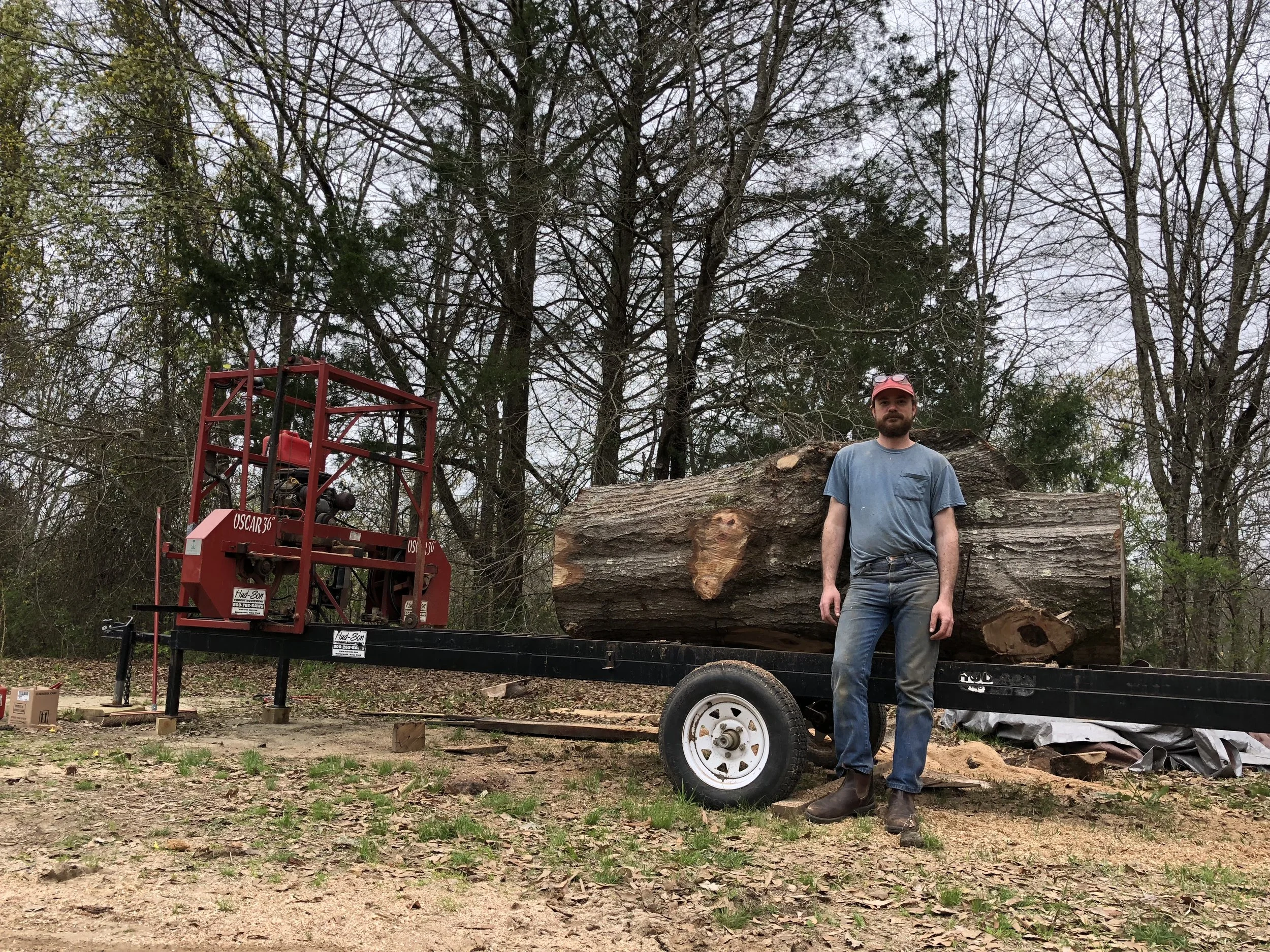A few weeks ago, I convinced my (beautiful and patient) wife to help me with the sawmill, and she decided it would be a good opportunity to get some footage. The two logs we saw in the video were roughly 30" wide, which maxed out the saw's capacity, and I had to cut them down in places in order for them to fit. The method of sawing seen in this video is called plain-sawing, also called flat-sawing, as opposed to quarter-sawing and rift-sawing. Flat-sawing is simply cutting straight through the log, and while it's challenging to dry material cut this way, it produces the widest boards with the most figure. Quarter sawn and rift sawn wood, alternatively, produce boards with the straightest grain, which is good for design that requires the wood to be as uniform as possible, and in cabinetry situations where you're looking for the most stable boards to remain flat over time.
We flat-saw everything, because it's the most practical method with this particular saw, and because it's best for live-edge furniture. However, we've experienced warping during the drying process in some logs - most dramatically with cherry.
After the logs are sawn, they go down to the shop, where they are stacked-and-stickered, which allows air to move over them, and moisture to exit the wood as evenly as possible. One cause of warping is when moisture escapes either side of a board at an uneven rate. So we try to reduce the possibility of this.
The slabs will now sit and air dry this way for two years or so, at which time they will go into the kiln, to be finished off and brought down to a moisture level that is consistent with the interior of a home. This process of slow-drying lumber is another technique to reduce warping and checking.
Watch Hannah's video below! We'll post more on this process in the weeks to come.


